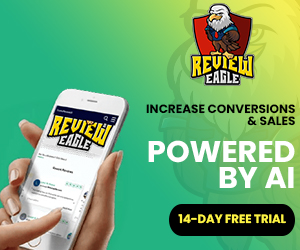introduction We are living in the Digital Age and having a strong presence on social media is no longer an option but a necessity. On social media, it is essential to create thoughtful and meaningful content to engage your audience and ensure they come back for more. However, developing engaging content and creating effective social media engagement plans can be tricky. Creating successful engagement plans requires a lot of strategy and thoughtfulness. It involves understanding your target audience, assessing the platforms, and developing unique and interactive content. To help you build successful engagement plans, our team has compiled 10 features that you must consider while creating your social media engagement plans. These features include understanding your customer personas, determining the right platforms, setting SMART objectives, monitoring performance metrics, identifying success metrics, and much more. Each of these features has a major role to play in making sure that your social media engagement plans are effective, and creative, and drive tangible results. Read on to discover the 10 features to include when creating your social media engagement plans.
Introduction
The key to successful social media engagement is planning ahead. Knowing what you want to post, when, and to which platforms is essential if you want to reach your desired audience. To help you get started, here are 10 features to consider when creating your engagement plans:
1. Branding: Make sure that you are consistent in your brand messaging across all of your social media platforms. This includes using the same visuals, logos, and colors.
2. Content Preferences: What type of content will your audience prefer? Will it be videos, infographics, images, or texts? Analyze your target audience and find out what type of content will be the most effective in engaging them.
3. Frequency: Decide how often you will post content on each platform. It is important to find the right balance between not posting too often and not posting too infrequently.
4. Platforms: Determine which social media platforms you will use. Consider the demographics, content preferences, and other characteristics of your target audience to decide which platforms are most suitable for your social media engagement plan.
5. Hashtags: Include relevant hashtags in your posts to make them easier to find and engage with.
6. Timing: What is the most effective time to post? Research the best time to post to each platform, and make sure to post at the peak times when your audience is most active.
7. Quality: Make sure to post high-quality content. Your posts should be well written, organized, and visually appealing.
8. Tone: Consider the tone that you will use in your posts. Will it be professional, casual, friendly, or humorous?
9. Influencers: Reach out to influencers in your industry and have them share your content. This will help you gain more exposure and reach more people.
10. Measurement: Keep track of your progress by measuring and analyzing your social media engagement. This will help you make adjustments to your plan as needed.
By following these 10 features, you can create an effective social media engagement plan that will help you improve your engagement and reach more people.
The Benefits of Social Media Engagement Plans
Social media engagement plans are an essential part of any successful marketing strategy. A well-thought-out plan can help you reach more people, increase your brand awareness, and engage with your target audience. By creating an engagement plan, you’ll be able to measure your progress and improve the effectiveness of your social media campaigns. Here are ten features to consider when creating a social media engagement plan.
First, decide which social media platforms you want to focus on. Think about which platforms your target audience uses most and create a plan that effectively reaches them. You can also create separate plans for each platform if you want to tailor them for specific purposes.
Second, make sure to include goals in your plan. When defining your goals, use SMART (Specific, Measurable, Attainable, Relevant, and Timely) criteria to ensure that you’re creating realistic goals. Doing this will also make it easier to track your progress.
Third, you should include a content strategy. This should include a mix of content including posts, videos, images, and more. Make sure to use a variety of content types throughout your plan in order to keep your audience engaged. Also, create content that adds value to your target audience.
Fourth, you should also include a plan for monitoring and responding to comments and messages. This is important as it will help you build relationships with your customers and potential customers. It’s also a great way to show that you care about your customers.
Fifth, set aside time to review your plan and make changes as needed. This can be done on a monthly or quarterly basis and will ensure that your plan remains on track. Evaluate your progress and adjust your plan accordingly.
Sixth, create a plan for tracking and measuring success. This includes tracking analytics to assess how well your plan is performing. This will help you identify what’s working and what’s not.
Seventh, set up a timeline for your plan. This can help keep you on track and ensure that you’re meeting your deadlines. It’s also a great way to keep your team organized and on the same page.
Eighth, determine how you’ll curate content. This means deciding how to best source content from other brands or influencers that you’ll be using in your posts.
Understanding Your Target Audience
Understanding your target audience is essential for creating an effective social media engagement plan. Whether it’s creating content that’s tailored to their interests, or using the right channels to reach them, knowing who you’re targeting is key. Knowing your audience helps you create content that resonates with them, making it more likely to increase engagement with your brand.
Having an understanding of who makes up your target audience is the first step. You should identify the demographic details, such as age and gender, as well as other things like interests and lifestyle choices. You should also look at their social media usage. This includes what channels they use, how often they use them, and what type of content they consume.
Once you have an understanding of your target audience, you need to create content with them in mind. This means creating content that appeals to their interests, speaks in their language, and is tailored to the channels they use. You should also consider things like timing, as different audiences may prefer different times for consuming content.
Another key component of social media engagement is interaction. This could include responding to comments, replying to messages, and creating conversations. This is a great way to build relationships with your audience, as well as get feedback on your content. It can also help you better understand your target audience, which can help you make more informed decisions when creating content.
Finally, you should consider the use of influencers when creating your social media engagement plan. Influencers can be a great way to reach new audiences, as well as create relationships with other people in your target market. When selecting influencers, make sure they align with your brand’s values and goals and that their audience matches your target audience.
Creating a successful social media engagement plan starts with understanding your target audience. Knowing who you’re targeting, what channels they use, and what content appeals to them will help you create content that resonates with them, increasing engagement with your brand. Additionally, by interacting and using influencers, you can create relationships with your target audience and reach new potential customers.
Setting Goals for Your Social Media Engagement Plan
Setting goals for your social media engagement plan is the best way to ensure that you're using the right strategies to achieve your desired results. When determining your goals, it's important to consider both short-term and long-term objectives, and factor in your budget, time, and resources available.
When it comes to setting goals for your social media engagement plan, it's important to be as specific as possible. Make sure to include measurable objectives, so that you can track your progress and recognize when you reach those goals. It's also important to set realistic goals that you can achieve in the period of time you have available.
Make sure to include objectives that go beyond simple metrics such as followers, likes, and comments. Goals should focus on engagement and customer loyalty, such as increasing shares, comments, and links to content. Also, aim to increase customer satisfaction by responding to messages and comments in a timely manner.
Finally, consider how to measure your success and use this to refine your social media engagement plan. Measure the success of your goals by tracking key metrics like website visits from social media, click-through rate (CTR), customer conversion rate, and customer satisfaction. This will help you understand what works best for your particular audience, so you can adjust your goals and strategies accordingly.
By setting clear and attainable goals for your social media engagement plan, you'll be able to maximize the success of your social media campaigns and create a plan that's tailored to your specific needs. With the right focus on customer engagement, you'll be able to maximize the value of your social media efforts and drive better results.
Developing an Engaging Content Strategy
Developing an engaging content strategy is an essential step for any social media plan. By having a well-thought-out plan, you can ensure that your content is seen, interacted with, and shared. Here are some simple tips to help you create an engaging content strategy.
Start with a goal in mind: As you create your content strategy, it’s important to have a goal in mind, such as increasing followers or increasing engagement with your content. Knowing exactly what you want to achieve will help you create a plan that is tailored to that goal.
Know your audience: To make sure you’re providing your followers with content that resonates with them, take the time to research who they are, what they care about, and what kind of content they enjoy. Utilizing this information will help you create content that your followers will be more likely to engage with.
Create content that stands out: You want your content to stand out in an increasingly saturated social media landscape. To do this, be sure to differentiate your content from what’s already out there. Look for visuals that capture attention and consider using interactive features, such as polls and quizzes.
Be consistent: Consistency is key when it comes to creating an engaging content strategy, as it allows you to build relationships with your followers and establish trust. To ensure consistency, set up a content calendar and create a regular schedule for posting.
Make it shareable: Make sure your content is easy to share by including share buttons and links in your posts. This will make it easier for your followers to spread your content and increase your reach.
Engage with your followers: One of the best ways to engage with your followers is to respond to their comments and messages. This will help to create a sense of community and build relationships with your followers.
Use analytics to track your progress: Tracking your progress is a great way to ensure that your content strategy is successful. Utilizing analytics tools will provide you with data on how your content is performing, so you can take the necessary steps to improve it.
By following these tips, you'll be able to create an engaging content strategy that will help you achieve your social media goals. With the right plan in place, you'll be able to create content that resonates with your followers and drives engagement.
Leverage Automation Tools to Automate Your Social Media Management
Social media engagement has become increasingly important for businesses of all types, and automation tools are essential to help manage and streamline the process. Automation tools allow social media managers to plan, execute, and track all their social media activities, helping them to save time and resources while ensuring they are getting the most out of their social media efforts.
An effective automation tool should provide features such as scheduling and analytics, enabling businesses to plan their social media engagement in advance and track their performance over time. Scheduling allows businesses to post on a regular basis, ensuring they are engaging with their audience on a consistent basis and staying on top of trends. Analytics provide insight into the performance of different posts, helping managers to understand which strategies work best.
Another crucial feature to look for in automation tools is the ability to manage multiple accounts from one platform. Businesses often need to manage multiple accounts for different product lines, locations, or customer segments. An automation tool should provide a central place to access all accounts, enabling businesses to manage their social media activities in a unified way.
Automation tools should also provide the option to add team members and collaborate on tasks. This allows multiple people to work on a single project, while also enabling group communication to ensure everyone is up to date on the latest activities. Finally, automation tools should come with reporting features, allowing businesses to review their performance and track the impact of their social media engagement efforts.
Overall, automation tools are essential to streamline social media management and help businesses get the most out of their social media engagement plans. When choosing an automation tool, make sure to consider features such as scheduling, analytics, multi-account management, team collaboration, and reporting to ensure you are getting the most out of your social media engagement.
Utilize Analytics to Track Engagement Performance
Analytics can act as a powerful tool when it comes to tracking your social media engagement performance. Whether you’re managing a small business or a large enterprise, keeping an eye on the metrics lets you know what’s working and what’s not.
Social media analytics can provide insights into who’s engaging with your content, what content works best, and how to adjust your strategy for better results. It can also be used to measure website traffic and conversions, as well as to monitor customer sentiment.
When it comes to using analytics to track your social media engagement performance, there are a few key features you should look out for. Firstly, be sure to measure engagement over time. This will help you identify any new trends and understand how effective your strategy is in the long term. Secondly, look for metrics, such as shares, clicks, and comments, that can provide a better understanding of how people are interacting with your content. Thirdly, consider using audience analytics to gain insights into the demographics of your followers and how they’re engaging with your posts.
Using analytics to track your social media engagement performance can be incredibly beneficial. Not only does it provide insights into what’s working and what’s not, it can also be used to inform future strategies to maximize your reach and engagement. By utilizing the features mentioned above, you can ensure you’re getting the most out of your social media efforts and building a successful social media engagement plan.
Employing A/B Testing for Maximum Efficiency
A/B testing can be a great tool to help you maximize the efficiency of your social media engagement. With A/B testing, you can compare different versions of your content to determine which version has better results. This allows you to focus on the content that works best for your audience and maximize the return on investment (ROI) of your social media campaigns.
When using A/B testing, it is important to consider the features you want to test. Some of the features to consider when developing your social media engagement plans are the length of the post, the type of content (e.g. text, video, or images), the timing, and the type of tone used. By understanding how these different elements influence your social media engagement, you can create content that resonates with your target audience.
Another factor to consider when using A/B testing for social media engagement is the platform you are using. Different platforms have different features, and it is important to tailor your content to the platform to ensure that it is as effective as possible. For example, on Twitter, shorter content is often more successful as it can be retweeted more easily. On Facebook, longer content can be more successful as it allows for more detailed engagement.
It is also important to consider the type of content you are creating. The type of content you create can have a huge impact on the success of your social media engagement. For example, if you post a video, it is more likely to be seen and shared than if you post an image. It is also important to consider the type of tone you use when creating content. Different tones can have different effects on engagement, so it is important to consider which tone works best for your audience.
Finally, it is important to consider the timing of your content. Different times of day can have different levels of success, so it is important to consider when the best time to post is. A/B testing can help you determine which times are the most effective for your content, and you can use this information to ensure that your content is seen by the right people at the right time.
By utilizing A/B testing to maximize the efficiency of your social media engagement, you can ensure that your content resonates with your target audience and drives the desired ROI. By considering the features, platform, type of content, tone, and timing when creating your social media engagement plans, you can
Planning for Social Media Crisis Management
Social media is quickly becoming an integral part of any business’ marketing strategy, but with it come risks. Knowing how to handle a social media crisis is essential to maintaining your reputation, and having a plan in place is the best way to ensure that you’re prepared. When creating your social media engagement plans, make sure to include the following features:
1) Establish a Crisis Team: Establishing a crisis team of individuals who are responsible for monitoring and responding to any potential crises is a great first step. Your team should be diverse and include members from different departments, such as marketing, customer service, and legal.
2) Develop a Social Media Policy: Develop a policy that outlines the processes for responding to a crisis, as well as the do’s and don’ts for social media engagement. This will ensure that all team members are on the same page and are following the same practices.
3) Monitor Regularly: Monitoring your social media channels regularly should be part of your ongoing strategy. This will ensure that you’re aware of any potential crises that may arise and can take proactive steps to mitigate any potential issues.
4) Create Templates: Create templates for responding to crises, as well as templates for responding to customer inquiries or complaints. This will help streamline the process and ensure that all responses are consistent.
5) Test Your Plan: Before any crisis hits, it’s important to test your plan and make sure that it’s working correctly. Run through different scenarios and make sure that all team members understand what needs to be done in each case.
6) Define Rights and Responsibilities: Define the rights and responsibilities of each team member in the event of a crisis. Make sure everyone knows what their role is and that they are clear on the do’s and don’ts of engaging with customers on social media.
7) Have a Process for Apologizing: Apologizing is an important step in any crisis management plan. Make sure to have a process in place that outlines how to apologize and how to respond to customer feedback.
8) Establish a Communication Plan: Establish a plan for communicating with customers and internal stakeholders in the event of a crisis. Make sure all team members understand who should be contacted and when.
9) Train Your Team:
Measuring the Success of Your Social Media Engagement Plan
Measuring the success of your social media engagement plan is essential. The metrics you can use to measure success depend on the goals you have established for your social media activities and the data you have available. To ensure that your social media efforts are effective, you need to consider both qualitative and quantitative metrics to track progress.
Qualitative metrics are subjective, but they can give you insights into how your content is performing and how your audience is engaging with it. These metrics might include the number of comments per post, the average likes per post, and the average length of conversations between customers and your brand.
Quantitative metrics are more objective and can help you evaluate the success of your social media engagement plan. Examples of quantitative metrics include the number of followers gained, the total reach of your content, and the total engagement your content receives.
Analyzing the data collected from your social media activities can help you understand how users interact with your content and identify areas for improvement. You can also use this data to optimize your content for better engagement and track progress over time.
It's important to set clear goals for your social media engagement plan and track the metrics that are most relevant to your business and audience. Make sure to look at metrics from several different angles in order to get a thorough understanding of how your content is performing when it comes to social media engagement.









